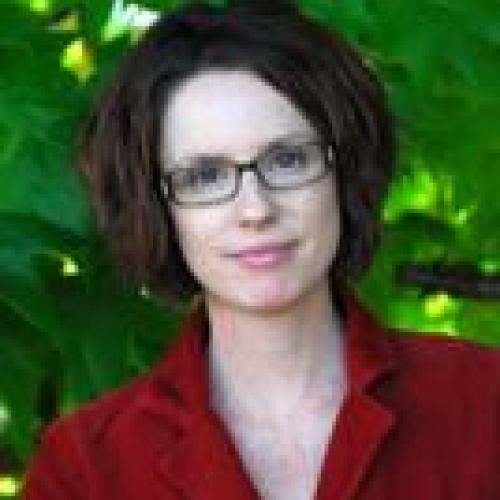
Kerns, Becky
Position Type:
Faculty
Job Title:
Courtesy Faculty; Research Ecologist, Pacific Northwest Research Station, Ecosystem Dynamics and Environmental Change Team, Threat Characterization and Management Program
Department:
Forest Ecosystems & Society
Phone Number:
Email:
Advising:
Graduate Major Advisor
Other Websites:
Education
Ph.D., 1999, Forest Ecosystem Science, School of Forestry, Northern Arizona University.
M.S., 1993, Quaternary Studies, Northern Arizona University.
B.S., 1988, Geological Science, University of California at Santa Barbara.
Research Areas
Science of Conservation, Restoration and Sustainable Management
Forest, Wildlife and Landscape Ecology
Research Interests
- Disturbance Ecology
- Restoration Ecology
I study forest and rangeland disturbances (fire, fuel treatments, logging, invasive plants, and climate change), restoration activities, and their interactions and biophysical controls. Projects are typically designed to be directly applicable to the challenges many public and private land managers face, and to help managers sustain the health, diversity, and productivity of the Nation’s forests and grasslands to meet the needs of present and future generations. I both develop and apply ecological theory at multiple scales using field based research, long-term studies, and ecosystem modeling.
Bio
Appointment length: 10/5/2016 - 10/4/2021; Collaborators: Hailemariam, Temesgen and Nietupski, Ty
External (non-CoF) Graduate Students
Ridder, Luke (OSU Range Department)
Selected Publications:
- Westlind, D., Kerns, B. K., and W. G. Thies. 2017. Long-term effects of burn season and frequency on ponderosa pine forest fuels and seedlings. Journal of Fire Ecology 13: 42-61. doi: 10.4 41.
- Kerns, B, K. and M.A. Day. 2017. The importance of disturbance by fire and other abiotic and biotic factors in driving cheatgrass invasion varies based on invasion stage. Biological Invasions DOI 10.1007/s10530-017-1395-3.
- Kerns, B. K., Kim, J. B., Kline, J. D., and Day. 2016. US exposure to multiple landscape stressors and climate change. Regional Environmental Change DOI 10.1007/s10113-016-0934-2.996/fireecology.130304261.
- Kline, J., Kerns, B. K., D, Buonopane, M, and Hammer, R. 2013. Mapping multiple forest threats in the Northwest. Journal of Forestry 206-213.
- Ayres, M., Hicke, J. A., Kerns, B. K., McKenzie, D. Littell, J. S., Band, L. E., Luce, C. H., and Weed, A S. 2014. Effects of climate change on disturbance regimes. In: Peterson, D.L., J.M. Vose, T. Patel-Weynand, and Contributing Authors. Climate Change and United States Forests. Springer, Dordrecht, The Netherlands, pp 55-92.
- Buonopane, M., Snider, G., Kerns, B.K., and Doescher, P. 2013. Complex restoration challenges: Weeds, seeds, and roads in a forested Wildland Urban Interface. Forest Ecology and Management 295:87-96.
- Littell, J. S., D. McKenzie, B. K. Kerns, S. Cushman, and C. G. Shaw. 2011. On using climate driven ecological models to inform decision making to prepare for climate change. Ecosphere 2(9):102. doi:10.1890/ES11-00114.1.
- Kerns, B.K., Buonopane, M. B., Thies, W., and Niwa, C. 2011. Reintroducing fire into a ponderosa pine forest with and without cattle grazing: understory vegetation response. Ecosphere 2(5):artXX.doi:10.1890/ES10-00183.I
- Kerns, B.K., B. Naylor, M. Buonopane, C. Parks, B. Rogers. 2009. Modeling tamarisk (Tamarix spp.) habitat and climate change effects in the Northwestern United States. Invasive Plant Science and Management 2:200-215
- Furniss, M.J.; Millar, C.I.; Peterson, D.L.; Joyce, L.A.; Neilson, R.P.; Halofsky, J.E.; Kerns, B.K. (editors). 2009. Adapting to Climate Change: A Short Course for Land Managers. GTR-PNW-789.
- Ager, A., M. A. Finney, and B.K. Kerns. 2007. Modeling wildfire risk to northern spotted owl (Strix occidentalis caurin) habitat in Central Oregon, USA. Forest Ecology and Management 246:45-56.
- Kerns, B.K. and A. Ager. 2007. Risk assessment for biodiversity conservation planning in Pacific Northwest forests. Forest Ecology and Management 246:38-44.
- Kerns, B. K., Thies, W. G., and Niwa, C. 2006. Season and severity of prescribed burn in ponderosa pine forests: implications for understory native and exotic plants. Écoscience 13(2): 44-55.
- Kerns, B. K., and J. Ohmann. 2004. Evaluation and prediction of shrub cover in coastal Oregon forests. Ecological Indicators 4:83-98.
- Kerns, B. K., S. J. Alexander, and J. D. Bailey. 2004. Huckleberry abundance, stand conditions and use in western Oregon: evaluating the role of forest management. Economic Botany 58:668-678
- Kerns, B. K., M. M. Moore, M. E. Timpson, and S. C. Hart. 2003. Soil properties associated with vegetation patches in a ponderosa pine-bunchgrass mosaic. Western North American Naturalist 63:452-462.
- Kerns, B. K., M. M. Moore and S. C. Hart. 2001. Estimating forest-grassland dynamics using soil phytolith assemblages and SOM δ13C. Écoscience 8(4):478-488.
- Kerns, B. K. 2001. Diagnostic phytoliths for a ponderosa pine-bunchgrass community near Flagstaff, Arizona. The Southwestern Naturalist 46(3):282-294.